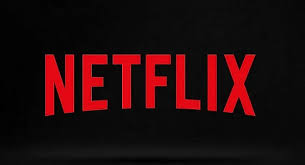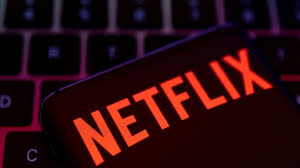
Netflix could increase price of standard plan by December

**Netflix Could Increase the Price of Standard Plan by December: What This Means for Subscribers and the Streaming Industry**
Netflix, the world’s leading streaming service, is reportedly considering an increase in the price of its standard plan by December. This potential price hike comes at a time when the streaming landscape is becoming increasingly competitive, with numerous platforms vying for viewers’ attention and subscription dollars. In this article, we will explore the reasons behind this potential price increase, its impact on subscribers, and the broader implications for the streaming industry.
### The Current State of Netflix
**A Market Leader Facing New Challenges**
Netflix has long been the dominant player in the streaming market, boasting over 230 million subscribers worldwide. The company has set the standard for original content production, with hits like *Stranger Things*, *The Crown*, and *Bridgerton* drawing in millions of viewers. However, the streaming giant faces new challenges as competition intensifies and costs rise.
**Rising Costs and Investment in Content**
One of the primary reasons behind Netflix’s potential price increase is the rising cost of content production. The company has been investing heavily in original programming, spending billions of dollars annually to create a diverse and appealing library of shows and movies. This investment is crucial for maintaining its competitive edge but also puts pressure on the company’s finances.
### The Potential Price Increase
**Details and Timing**
According to industry insiders, Netflix is considering raising the price of its standard plan by December. The standard plan, which currently costs around $15.49 per month in the United States, is the most popular among subscribers. While the exact amount of the increase has not been disclosed, it is expected to be in the range of $1 to $2 per month.
**Historical Context**
This would not be the first time Netflix has raised its prices. The company has implemented several price hikes over the years to cover increasing content costs and other expenses. For instance, in early 2022, Netflix increased the price of its standard plan from $13.99 to $15.49 per month. Despite initial backlash, the company saw minimal subscriber loss, indicating that many users are willing to pay a premium for high-quality content.
### Impact on Subscribers
**Financial Considerations**
For many subscribers, even a small increase in the monthly subscription fee can add up over time. A $2 increase, for example, would result in an additional $24 per year. This might seem negligible for some, but for others, especially those managing tight budgets, it could be a tipping point.
**Perceived Value**
The impact of the price increase will largely depend on how subscribers perceive the value of Netflix’s content. If viewers feel that they are getting a good return on their investment through access to high-quality and diverse content, they are more likely to accept the price hike. However, if they perceive a decline in the quality or variety of available content, they may consider canceling their subscriptions or switching to alternative services.
**Customer Retention Strategies**
To mitigate potential subscriber loss, Netflix may implement various customer retention strategies. These could include offering promotional discounts, bundling services with other platforms, or introducing new content to justify the price increase. Effective communication about the reasons behind the price hike and highlighting upcoming content releases could also help maintain subscriber loyalty.
### Broader Implications for the Streaming Industry
**Competitive Landscape**
The streaming industry has become highly competitive, with platforms like Disney+, Amazon Prime Video, HBO Max, and Apple TV+ all vying for market share. Each of these services offers unique content and pricing structures, creating a dynamic environment where consumers have numerous options. Netflix’s price increase could prompt some subscribers to explore these alternatives, potentially leading to a redistribution of market share.
**Industry-Wide Price Adjustments**
Netflix’s decision to raise prices could also influence other streaming services to adjust their pricing strategies. Historically, major players in the industry have often followed each other’s lead when it comes to pricing. If Netflix’s price hike is successful and does not result in significant subscriber loss, other platforms might consider similar increases to bolster their revenues and fund content creation.
**Content Investment and Quality**
The need to fund content production is a common challenge for all streaming services. As Netflix raises its prices to support its investment in original programming, other platforms may feel the pressure to enhance their content offerings to stay competitive. This could lead to increased spending across the industry, driving up the quality and diversity of available content but also potentially leading to higher subscription costs for consumers.
### Subscriber Reactions and Alternatives
**Potential Backlash**
Price increases are rarely welcomed by consumers, and Netflix’s move is likely to generate some backlash. Social media platforms and forums could see a surge in complaints and discussions about the value of Netflix’s service. The company will need to carefully manage this backlash to prevent it from escalating into a broader customer dissatisfaction issue.
**Exploring Alternatives**
As subscribers evaluate the value of their Netflix subscriptions in light of the potential price increase, many may explore alternative streaming services. Platforms like Disney+ offer popular franchises and new releases at competitive prices, while services like Amazon Prime Video and HBO Max provide extensive libraries of movies and TV shows. Additionally, free or ad-supported services such as Peacock and Tubi could become more attractive options for cost-conscious viewers.
### The Future of Netflix
**Adapting to Market Dynamics**
Netflix has demonstrated resilience and adaptability in the face of market changes and competition. The company’s ability to innovate, produce compelling content, and adjust its strategies has been key to its success. Moving forward, Netflix will need to continue evolving to meet the changing preferences and expectations of its subscribers.
**Exploring New Revenue Streams**
In addition to adjusting subscription prices, Netflix may explore new revenue streams to support its content investment. This could include expanding its merchandise sales, exploring live events or experiences related to its popular shows, or even introducing ad-supported tiers to attract a wider audience.







